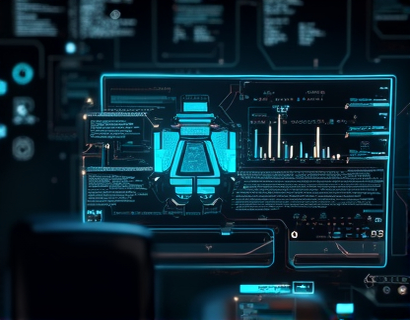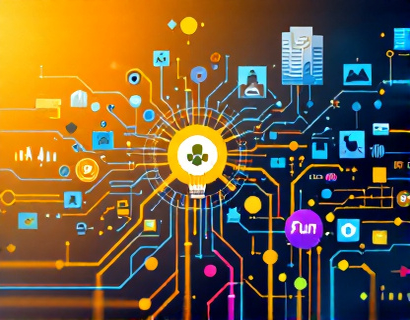Transforming Logistics Knowledge with AI-Powered Chat Interfaces
The logistics industry, a cornerstone of global trade and commerce, is witnessing a revolutionary shift with the integration of AI-powered chat interfaces. These advanced tools are designed to provide specialized knowledge, ensuring accuracy and safety for users of all ages. This article delves into the features and benefits of such innovative chat interfaces, catering to a diverse audience including logistics professionals, educators, students, parents, and industry enthusiasts.
Understanding AI-Powered Logistics Chat Interfaces
AI-powered logistics chat interfaces are sophisticated digital assistants that leverage artificial intelligence to deliver expert insights and educational resources. These chat interfaces are programmed to understand and respond to user queries with precision, drawing from a vast database of verified information. The primary goal is to bridge the knowledge gap in logistics, making complex information accessible and understandable.
Expert Insights for Logistics Professionals
For logistics professionals, these chat interfaces serve as a valuable resource for staying updated on industry trends, best practices, and regulatory changes. Users can engage in real-time conversations, asking specific questions about supply chain management, inventory control, transportation logistics, and more. The AI's ability to provide timely and accurate responses helps professionals make informed decisions, enhancing operational efficiency and reducing errors.
Educational Resources for Students and Educators
In the educational sphere, AI-powered logistics chat interfaces offer a wealth of learning opportunities. Students can explore topics ranging from the basics of logistics to advanced concepts in supply chain strategy. Educators can utilize these tools to create engaging lesson plans, providing students with interactive and informative content. The chat interfaces can adapt to different learning levels, ensuring that both beginners and advanced learners find the information relevant and useful.
Ensuring Accuracy and Safety
One of the critical features of these chat interfaces is the emphasis on content verification. All information provided is rigorously checked for accuracy, ensuring users receive reliable data. This is particularly important in the logistics industry, where incorrect information can lead to significant operational issues. Additionally, these platforms offer child-friendly versions, making them safe for young users to explore logistics concepts without exposure to inappropriate content.
Child-Friendly Versions for Young Learners
Recognizing the importance of early education, these chat interfaces include versions specifically designed for children and students. These versions use simpler language, engaging visuals, and interactive elements to make learning about logistics fun and accessible. Parents and educators can rest assured that their children are learning from a safe and controlled environment, fostering a curiosity for the subject from a young age.
Benefits for Industry Enthusiasts
Industry enthusiasts, whether amateur or professional, can also benefit from AI-powered logistics chat interfaces. These tools provide in-depth articles, case studies, and expert opinions on various logistics topics. Users can delve into historical developments, current challenges, and future trends in the industry. The chat interfaces can recommend further reading and resources, encouraging continuous learning and engagement.
Interactive Learning and Community Engagement
Beyond providing information, these chat interfaces foster a sense of community among users. Logistics professionals and enthusiasts can participate in discussions, share experiences, and collaborate on solutions to common problems. This interactive approach not only enhances knowledge but also builds a network of like-minded individuals who can support and inspire each other.
Technological Advancements and Future Prospects
The development of AI-powered logistics chat interfaces is part of a broader trend in the use of artificial intelligence across various industries. As technology advances, these chat interfaces are becoming more sophisticated, capable of understanding context, nuance, and even emotional cues. This evolution promises to make interactions more natural and effective, further enhancing the user experience.
Integration with Other Technologies
The potential for integration with other technologies, such as IoT devices and blockchain, opens up new possibilities for logistics chat interfaces. For instance, combining real-time data from IoT sensors with AI-driven insights can provide a comprehensive view of supply chain operations. Similarly, integrating blockchain technology can ensure the integrity and traceability of logistics data, adding another layer of security and transparency.
Case Studies and Success Stories
Several organizations have already implemented AI-powered logistics chat interfaces with notable success. A major shipping company, for example, integrated such a chat interface to assist their customer service team. The results were impressive, with a significant reduction in customer inquiries and a marked improvement in response times. The chat interface not only handled routine questions but also provided proactive recommendations, enhancing the overall customer experience.
Educational Institutions Embracing the Technology
Educational institutions are also embracing these chat interfaces to enhance their logistics curricula. A leading university implemented an AI chat tool in their supply chain management course, allowing students to interact with the material in a dynamic way. Feedback from both students and faculty was overwhelmingly positive, with many noting the tool's ability to clarify complex concepts and provide practical examples.
Challenges and Considerations
While the benefits are clear, there are challenges and considerations to keep in mind when implementing AI-powered logistics chat interfaces. One key challenge is ensuring the AI's understanding of domain-specific jargon and industry-specific nuances. Continuous training and updates are necessary to maintain accuracy and relevance. Additionally, user privacy and data security must be prioritized, with robust measures in place to protect sensitive information.
Overcoming Language and Cultural Barriers
Another consideration is the ability of these chat interfaces to handle multiple languages and cultural contexts. The logistics industry is global, and users from different regions may have varying levels of English proficiency. Developing chat interfaces that can adapt to different languages and cultural norms is essential for widespread adoption and effectiveness.
Conclusion
AI-powered logistics chat interfaces represent a significant advancement in making logistics knowledge accessible and reliable. By providing expert insights, educational resources, and a safe environment for learning, these tools cater to a diverse audience. As technology continues to evolve, the potential for these chat interfaces to transform the logistics industry and education is immense. Embracing this innovation can lead to more informed professionals, better-educated students, and a more efficient and transparent logistics sector.










































